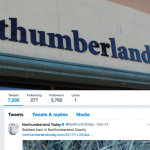Blame Canadian media woes on owners, managers, regulators—not the “failed business model”
By Christopher Johnson
Want to own Canada’s largest newspaper chain?
Maybe you can.
If over 5,000 former and current Postmedia journalists each invested $7,750, they could own the company’s market capitalization of $41 million on the Toronto Stock Exchange. That’s at a share price of 24 cents, a fraction of its $15 value four years ago.
Or, 18 Vancouver journalists could sell their homes at the city’s average sale price of $2.4 million and then outright own the National Post, the Vancouver Sun and Province and the largest dailies in most Canadian cities. Or about 100 journalists in Toronto could sell their homes at $1.6 million each and own Torstar’s market cap of $165 million at a share price of $2.34, down from $15 a few years ago.
Is it a good investment?
Many journalists say no. They believe they’re victims of a failed business model where nobody pays for news anymore.
Media owners and managers often use this excuse to justify massive cutbacks including—in recent months—380 at Bell, 300 at Torstar, 200 at Rogers and 90 at Postmedia (following 3,000 job losses in five years), not to mention the closure of the Nanaimo Daily News and print version of the Guelph Mercury among others.
The evidence, however, suggests problems are rooted in ownership, management and regulation.
If the business model has indeed failed, then how could Rogers report last October that profits for July, August and September were up 40 per cent to $464 million?
Guy Huntingford, the Calgary Herald‘s publisher from 2010 to 2013, claims his paper and the Edmonton Journal were profitable but weighed down by the Toronto-based parent company’s debt of $700 million mainly to US hedge funds feeding on interest payments.
“Our papers make money most days of the week,” Postmedia CEO Paul Godfrey told the Canadian Press.
So, if some papers make money, it suggests the business model can indeed work in some cases. If a company such as Postmedia owes $700 million, it suggests the bean counters and executives—not the journalists—messed up.
Yet Postmedia’s board recently awarded Godfrey a $1.75 million bonus. “They knew it was three years of work, working weekends, holidays, several times throughout the night to get reports ready,” Godfrey told the Canadian Press. “No apologies whatsoever.”
Money well spent? That same amount could buy 7,000 freelance reports, or about 20 per day, enough to fill most dailies. That $1.75 million could employ 35 journalists at $50,000 per year, and their combined earnings could own five per cent of Postmedia’s market capitalization.
Readership figures also contradict the theory that journalism is dead. Newspapers Canada reports that the Edmonton Journal and Edmonton Sun still retain 62,000 and 30,000 subscribers each despite Alberta’s oil bust. The Globe and Mail claims 1.16 million followers on Twitter, while CBC News claims 1.55 million.
The New York Times, among others, claim it’s doing better than ever. Japan’s Nihon Keizai Shimbun business daily recently bought the UK’s Financial Times for US$1.32 billion. Instead of blaming the internet or a failed business model, The Guardian, though scaling back now, hired 450 people the past three years and opened newsrooms in Australia and the United States. It claims five million Twitter followers and more than 120 million readers per month. The Daily Mail claims its monthly traffic rose 18 per cent in one month to 224 million.
So, why aren’t Canadian newspapers more profitable?
Some industry analysts blame any combination of the Competition Bureau, the CRTC, stock exchange regulators and all levels of government. Laws governing media ownership haven’t changed in 25 years, long before the internet, mobile phones and iPads.
Canada’s current system favours the state-funded CBC and telecom giants such as Bell, Rogers, Telus and Shaw. Ottawa in 2012-13 gave broadcasters $1.3 billion (of its total $4 billion spend on programming).
Their websites, which compete for traffic from legacy print media, also have a huge competitive advantage over struggling small and medium-sized print and online entrepreneurs who get nearly zero government funding.
How unfair is the playing field?
Ottawa gives the CBC more than 30 times the market capitalization of its competitor, Postmedia. The new Trudeau government plans to give the CBC an extra $150 million in funding, enough to buy four newspaper chains the size of Postmedia.
What if Ottawa gave $150 million annually to the 10,000 journalists who recently lost their jobs in Canada? They would each get $15,000 per year. If they combined their money, they could probably own and operate every newspaper in the country and still afford a $1.75 million bonus for Mr. Godfrey.
[[{“fid”:”5455″,”view_mode”:”default”,”fields”:{“format”:”default”,”field_file_image_alt_text[und][0][value]”:””,”field_file_image_title_text[und][0][value]”:””},”type”:”media”,”attributes”:{“height”:355,”width”:466,”style”:”width: 75px; height: 57px; margin-left: 5px; margin-right: 5px; float: left;”,”class”:”media-element file-default”},”link_text”:null}]]Carleton j-school grad Christopher Johnson has traveled to 102 countries and worked for dozens of major media organizations worldwide.Carleton j-school grad Christopher Johnson has traveled to 102 countries and worked for dozens of major media organizations worldwide.



